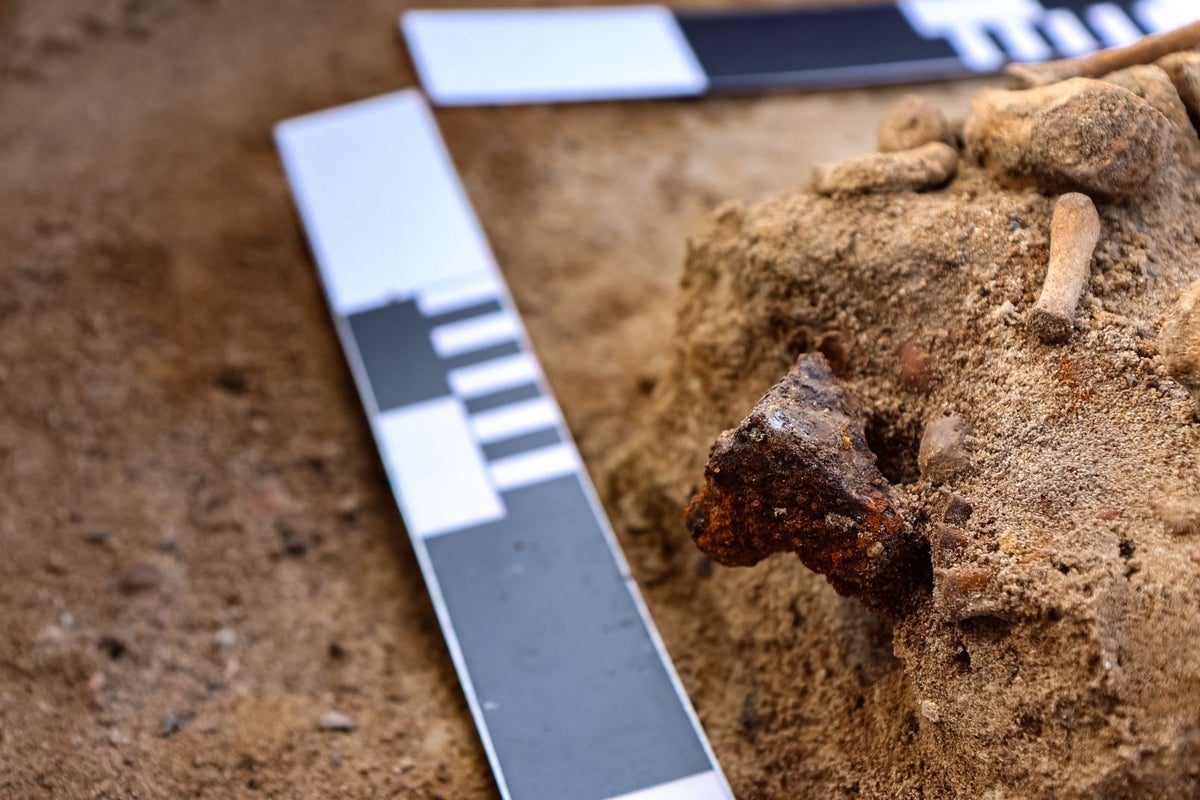Seventeenth century ‘vampire child’ with padlocked ankle unearthed in Polish ‘necropolis’

Sign up for a full digest of all the best opinions of the week in our Voices Dispatches email
Sign up to our free weekly Voices newsletter
Archaeologists have unearthed the unusual remains of a child from the 17th century found buried with a padlock attached to the foot that scientists said were suggestions of fears during medieval times that the dead may spring back to life as “vampires”, said reports.
Researchers, including Dariusz Poliński from the Nicolaus Copernicus University, explored and excavated graves in an early medieval “necropolis” graveyard near Dąbrowa Chełmińska in Poland in search of unique burials.
Here, they made a breakthrough discovery of a young medieval woman’s burial last year, whose body was double protected “from rising from the grave” with a triangular padlock on the big toe at her left foot, and a sickle pointing down with a blade placed around her neck.
Looking for other similar burials nearby, the archaeologists have now uncovered the strange and unprecedented burial of a 17th century child of about 5-7 years age.
The child’s remains were found buried with his face facing down towards to the ground in the burial cavity suggesting the deceased and his “activity” was “feared” after death.
Such burials, with faces pointing downwards, were likely done in the region during medieval times to make the deceased “bite into the ground” and ensure they did not “pose a threat to people,” scientists explained in a statement.
Under the bones of the child, archaeologists also discovered a triangular padlock, almost similar to the one accompanying the remains of the medieval woman unearthed last year at the site.
An analysis suggested the child’s grave was likely violated and a part of the corpse taken away, but it is not known when and why it occurred or what happened to the remains.
Near the child’s grave, researchers also discovered a “puzzling cluster” of several children’s skeletons with a fragment of the jaw in one of them coloured green.
A similar greenish tint was also seen on the palate of the woman unearthed last year, scientists said.
Researchers suspect there might have been an object made of copper alloy in this person’s mouth.
During the field research, they also found the non-standard burial of a pregnant woman with the remains of her foetus seemingly preserved.
Scientists hope to conduct DNA tests of the remains in further lab studies to understand the woman’s eye colour, skin, hair and possible genetic diseases.
Given the large number of atypical graves with signs of strange medieval practices at the site, scientists strongly suspect the people of the time were “afraid” of at least some of the deceased.
They said the region was likely home to a cemetery that could have been Protestant, and particularly of those rejected from the general community.





